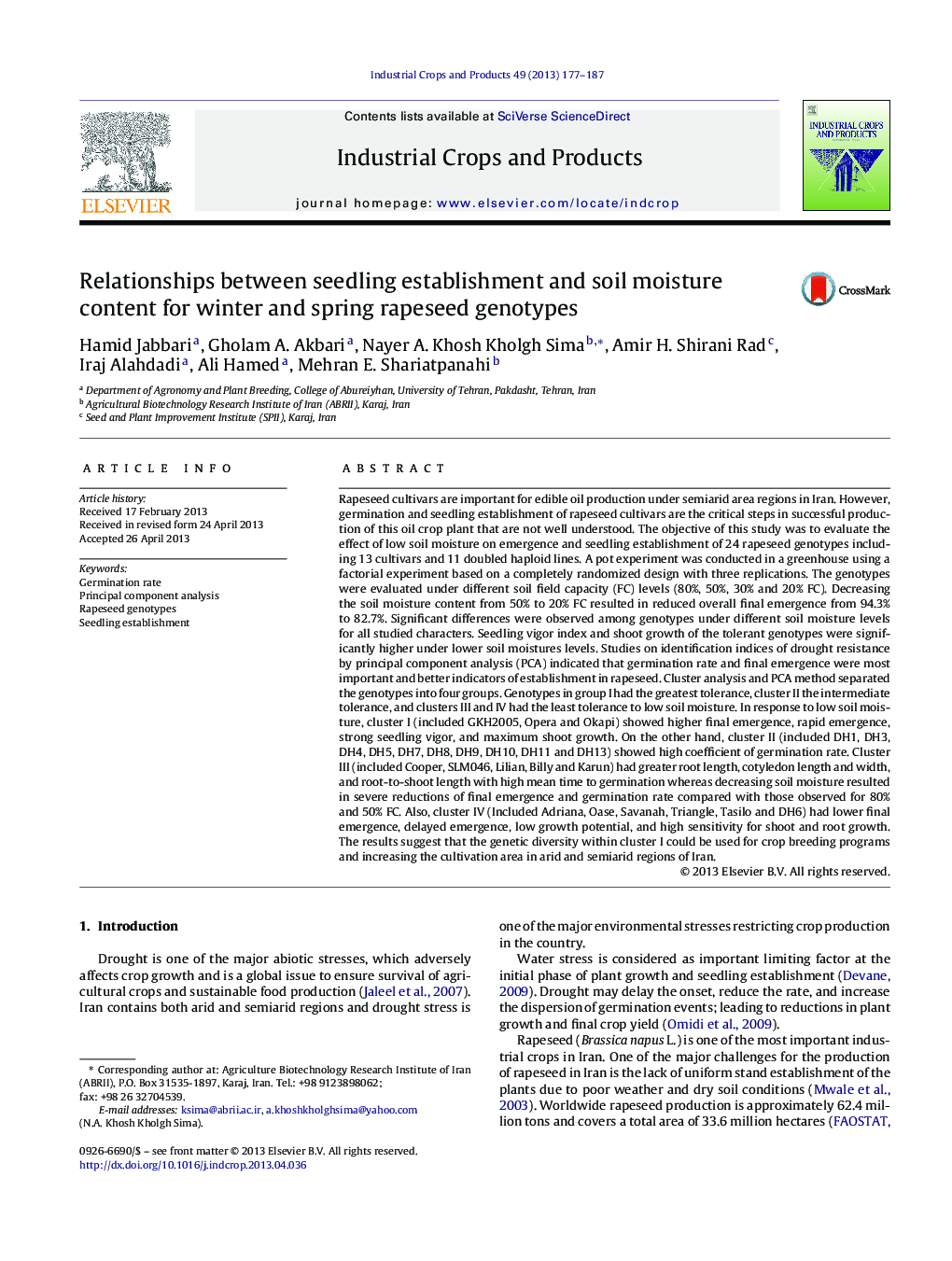| کد مقاله | کد نشریه | سال انتشار | مقاله انگلیسی | نسخه تمام متن |
|---|---|---|---|---|
| 6377284 | 1624860 | 2013 | 11 صفحه PDF | دانلود رایگان |
- A simple, reproducible and reliable technique for screening rapeseed genotypes for low soil moisture tolerance was suggested.
- Root growth characteristics were not critical indicators of establishment in rapeseed seedling for selection of genotypes tolerant to limiting soil moisture conditions.
- Both velocity of germination and final emergence were the most important traits in rapeseed seedling.
- Monitoring by PC, matrix cluster and cluster analysis could be effective methods for the selection of drought tolerant genotypes.
Rapeseed cultivars are important for edible oil production under semiarid area regions in Iran. However, germination and seedling establishment of rapeseed cultivars are the critical steps in successful production of this oil crop plant that are not well understood. The objective of this study was to evaluate the effect of low soil moisture on emergence and seedling establishment of 24 rapeseed genotypes including 13 cultivars and 11 doubled haploid lines. A pot experiment was conducted in a greenhouse using a factorial experiment based on a completely randomized design with three replications. The genotypes were evaluated under different soil field capacity (FC) levels (80%, 50%, 30% and 20% FC). Decreasing the soil moisture content from 50% to 20% FC resulted in reduced overall final emergence from 94.3% to 82.7%. Significant differences were observed among genotypes under different soil moisture levels for all studied characters. Seedling vigor index and shoot growth of the tolerant genotypes were significantly higher under lower soil moistures levels. Studies on identification indices of drought resistance by principal component analysis (PCA) indicated that germination rate and final emergence were most important and better indicators of establishment in rapeseed. Cluster analysis and PCA method separated the genotypes into four groups. Genotypes in group I had the greatest tolerance, cluster II the intermediate tolerance, and clusters III and IV had the least tolerance to low soil moisture. In response to low soil moisture, cluster I (included GKH2005, Opera and Okapi) showed higher final emergence, rapid emergence, strong seedling vigor, and maximum shoot growth. On the other hand, cluster II (included DH1, DH3, DH4, DH5, DH7, DH8, DH9, DH10, DH11 and DH13) showed high coefficient of germination rate. Cluster III (included Cooper, SLM046, Lilian, Billy and Karun) had greater root length, cotyledon length and width, and root-to-shoot length with high mean time to germination whereas decreasing soil moisture resulted in severe reductions of final emergence and germination rate compared with those observed for 80% and 50% FC. Also, cluster IV (Included Adriana, Oase, Savanah, Triangle, Tasilo and DH6) had lower final emergence, delayed emergence, low growth potential, and high sensitivity for shoot and root growth. The results suggest that the genetic diversity within cluster I could be used for crop breeding programs and increasing the cultivation area in arid and semiarid regions of Iran.
Journal: Industrial Crops and Products - Volume 49, August 2013, Pages 177-187
